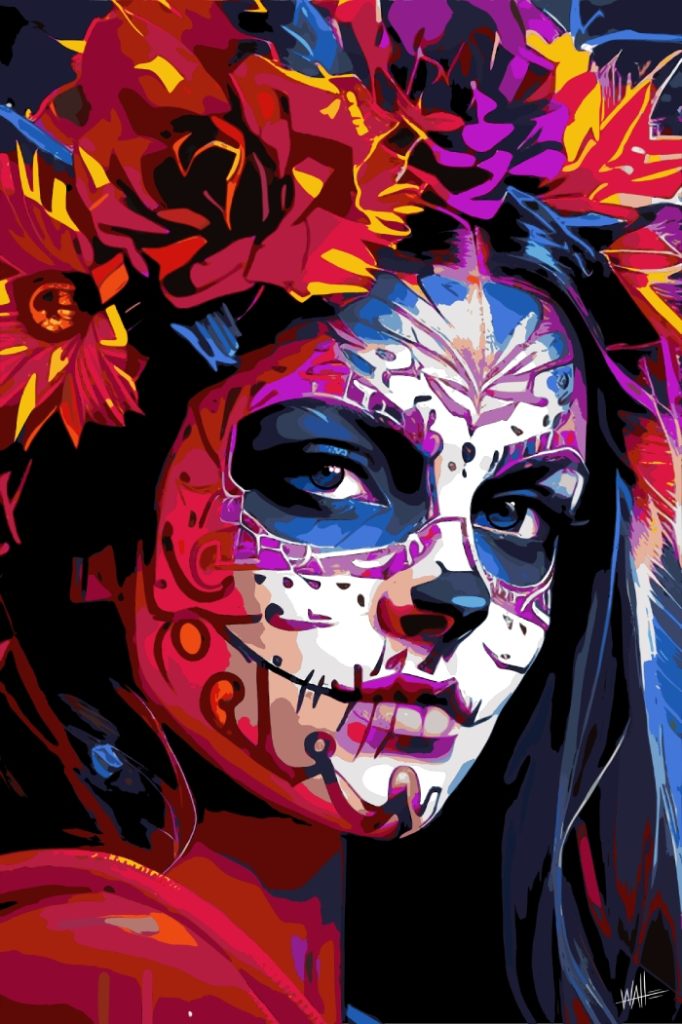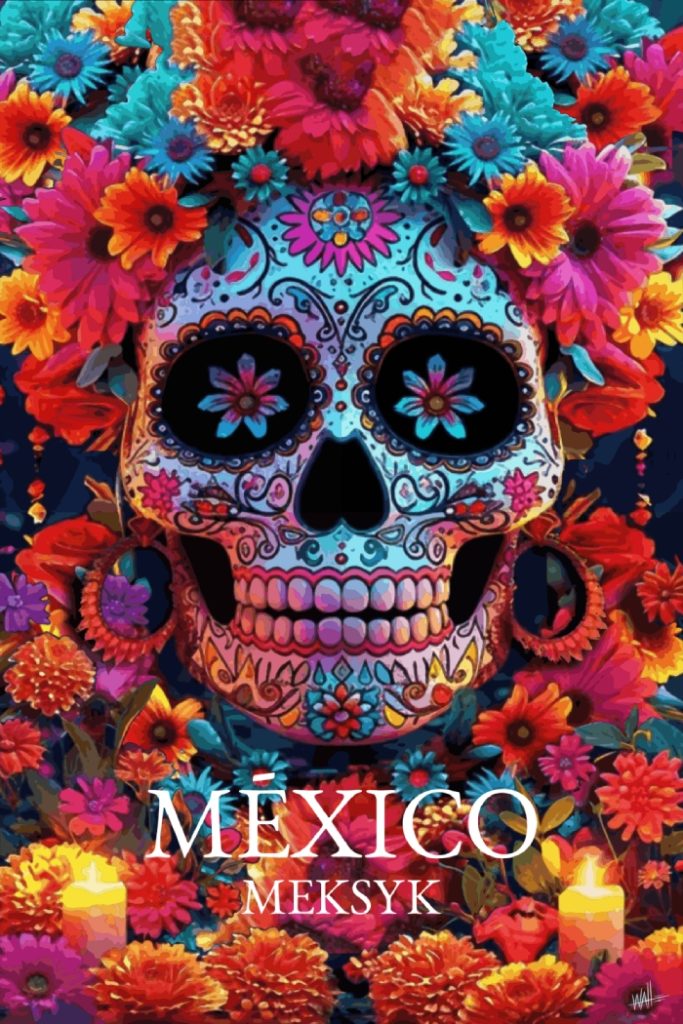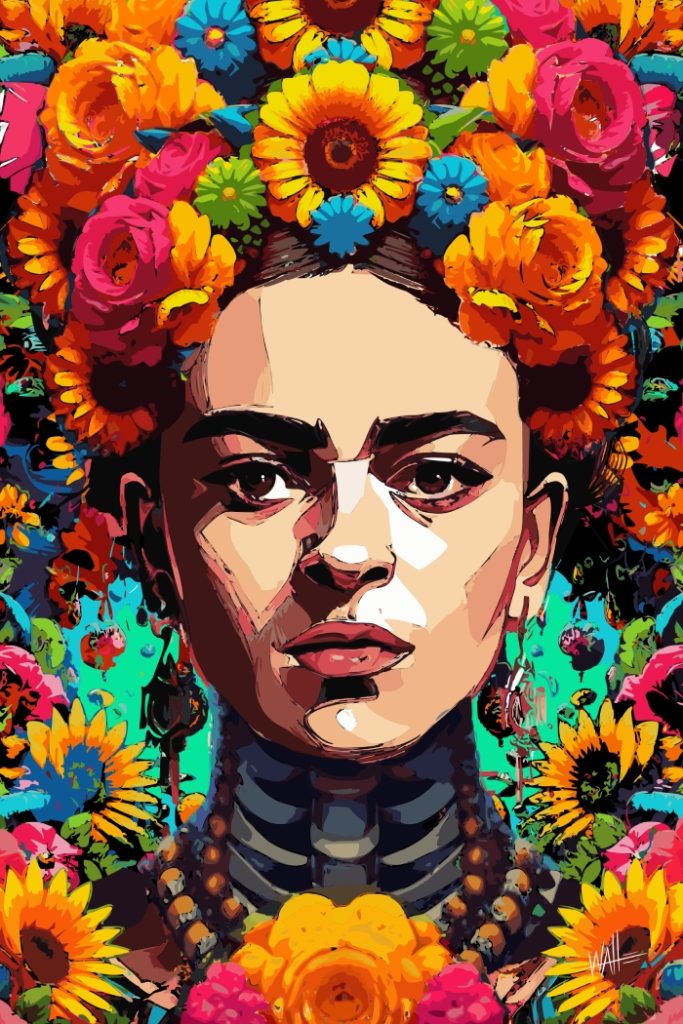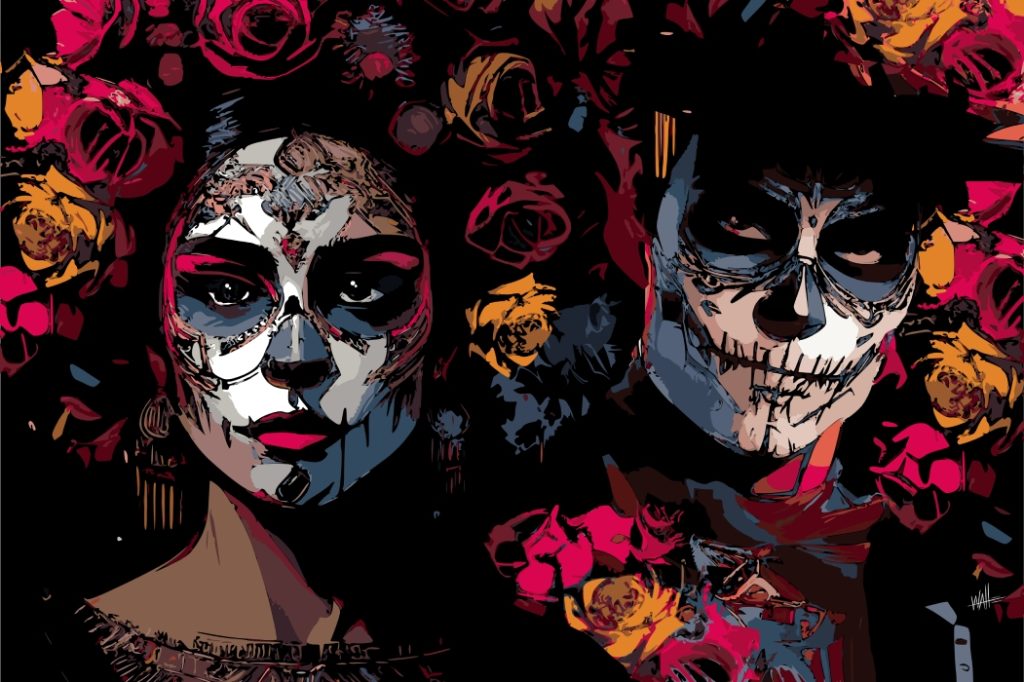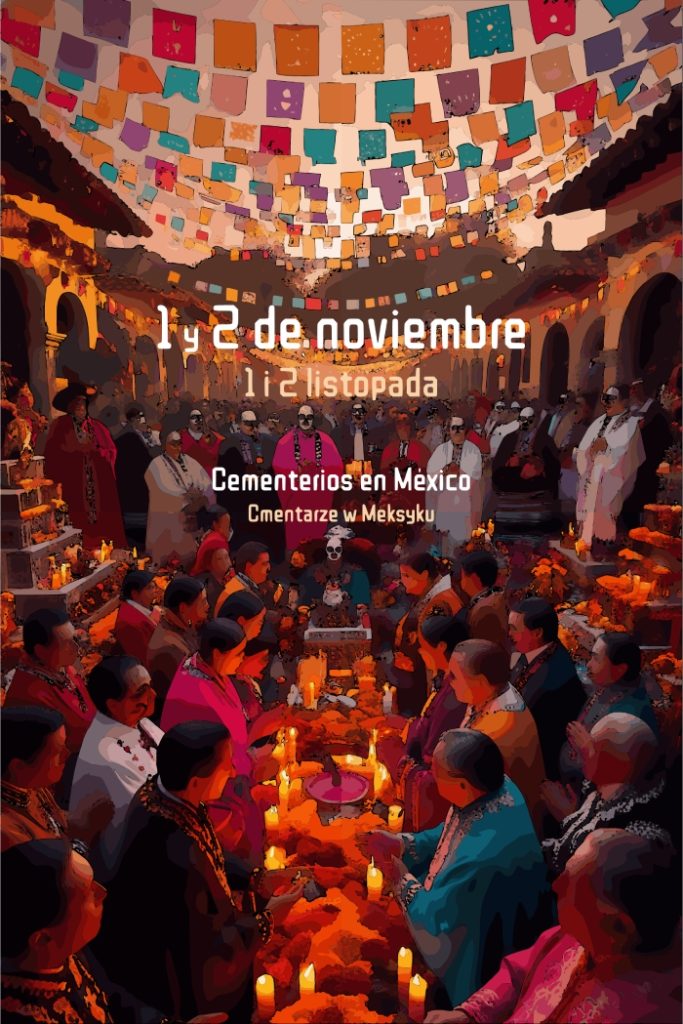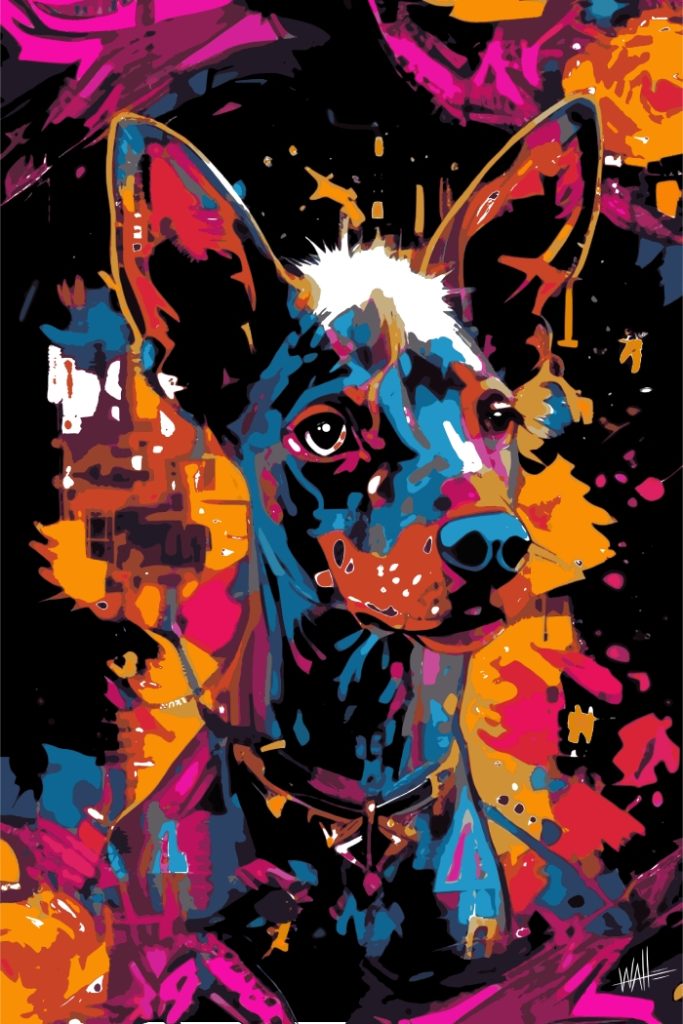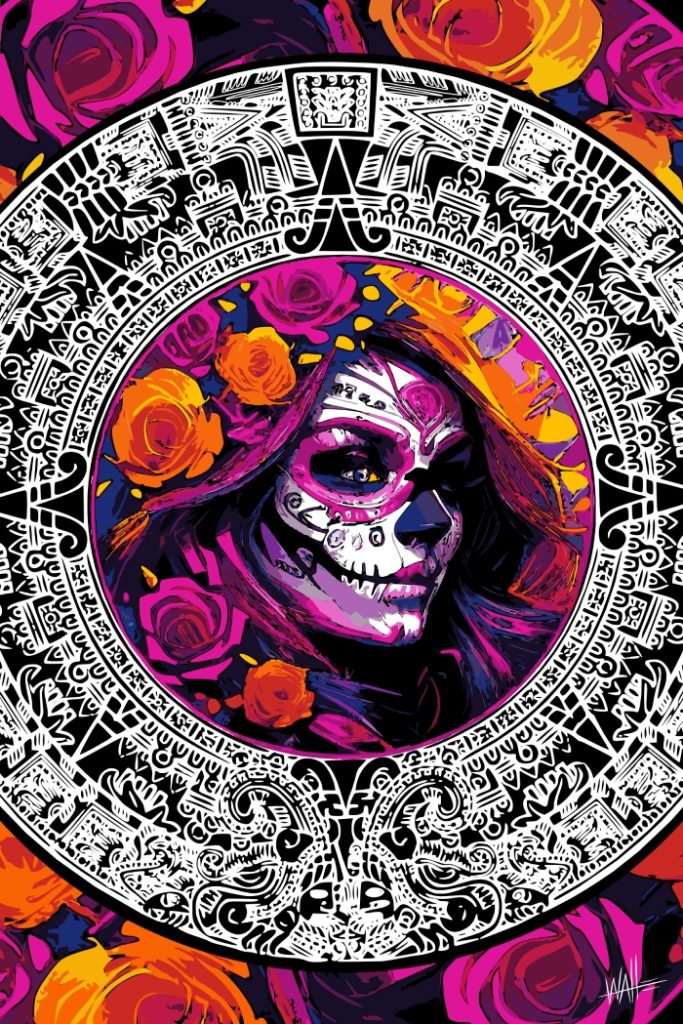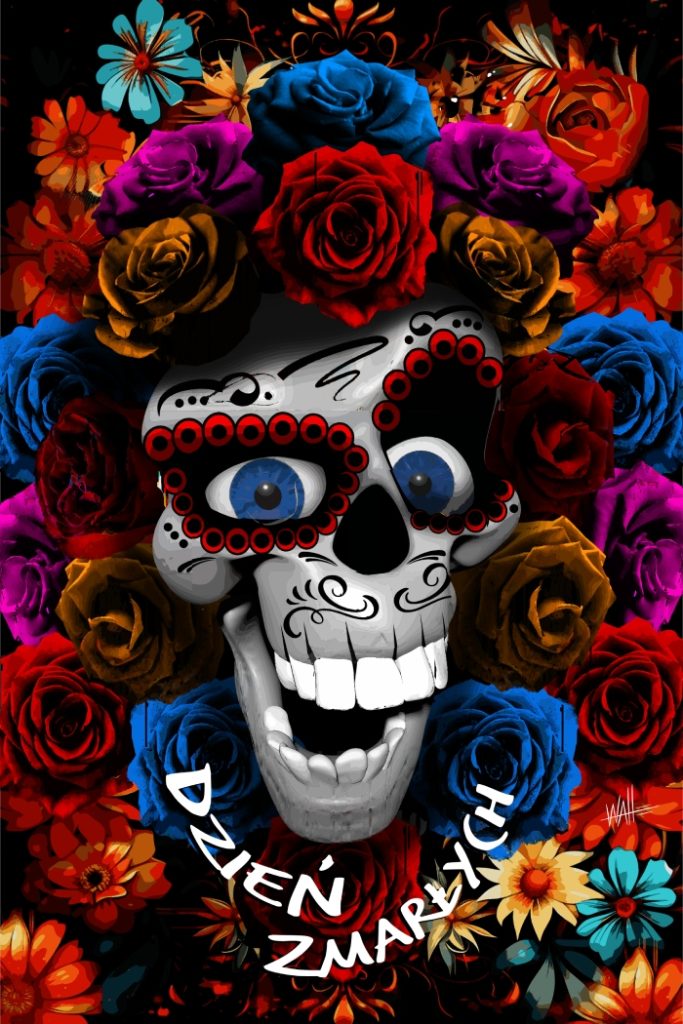
Celebration that transcends the world
The Day of the Dead has transcended Mexico’s borders and become a globally recognized celebration, known for its vibrant colors, detailed offerings, and distinctive skull-painted faces. This unique holiday views death through a festive and respectful lens, which has attracted people from various cultures and countries who seek a different way of remembering their loved ones. The image of “La Catrina,” created by artist José Guadalupe Posada and popularized by Diego Rivera, is one of the most recognizable symbols and has inspired the trend of painting faces as skulls, adding an artistic and visually impactful element to the celebration.
The colorful offerings, the use of marigold flowers, traditional costumes, and skull face paint have become an international attraction, further promoted by the film and cultural industries. The Disney and Pixar movie Coco was instrumental in popularizing the Day of the Dead abroad, as it showed the world the symbolism, love, and respect Mexicans have for their ancestors. Since its release, the holiday has been adopted in cities like Los Angeles, London, and Tokyo, where parades, exhibitions, and public events mirror Mexican traditions and encourage people of all ages to participate.
Today, the Day of the Dead is one of the most popular death-related celebrations worldwide, even surpassing Halloween in terms of cultural and spiritual meaning. Unlike Halloween’s spooky depiction of death, the Day of the Dead celebrates memory and connection with loved ones in a colorful and heartfelt way. This global expansion reflects a growing fascination with the Mexican view of death, celebrating life through memory, providing a positive and comforting perspective on a topic often feared or avoided in many cultures.
Święto, które wykracza poza świat
Dzień Zmarłych przekroczył granice Meksyku i stał się na całym świecie znaną celebracją, słynącą z żywych kolorów, szczegółowych ofiar i charakterystycznych pomalowanych na wzór czaszek twarzy. To wyjątkowe święto ukazuje śmierć z perspektywy radosnej i pełnej szacunku, co przyciągnęło ludzi z różnych kultur i krajów, którzy szukają odmiennego sposobu na upamiętnienie swoich bliskich. Wizerunek „La Catriny”, stworzony przez artystę José Guadalupe Posadę i spopularyzowany przez Diego Riverę, jest jednym z najbardziej rozpoznawalnych symboli i zainspirował trend malowania twarzy na wzór czaszek, dodając artystyczny i wizualnie imponujący element do obchodów.
Kolorowe ofiary, użycie kwiatów aksamitki, tradycyjne stroje i makijaż czaszek stały się międzynarodową atrakcją, wspieraną również przez przemysł filmowy i kulturalny. Film Disney i Pixar Coco odegrał kluczową rolę w popularyzacji Dnia Zmarłych poza granicami Meksyku, ukazując światu symbolikę, miłość i szacunek, jakie Meksykanie mają do swoich przodków. Od premiery tego filmu święto to zostało przyjęte w miastach takich jak Los Angeles, Londyn i Tokio, gdzie organizowane są parady, wystawy i wydarzenia publiczne, które naśladują meksykańskie tradycje i zachęcają ludzi w każdym wieku do udziału.
Dziś Dzień Zmarłych jest jednym z najpopularniejszych świąt związanych ze śmiercią na świecie, przewyższając nawet Halloween pod względem znaczenia kulturowego i duchowego. W przeciwieństwie do strasznej koncepcji śmierci podczas Halloween, Dzień Zmarłych celebruje pamięć i więź z bliskimi w sposób pełen kolorów i ciepła. Ta globalna ekspansja odzwierciedla rosnącą fascynację meksykańską wizją śmierci, która świętuje życie przez pamięć, oferując pozytywne i kojące spojrzenie na temat, który w wielu kulturach jest często budzący lęk lub unikany.

